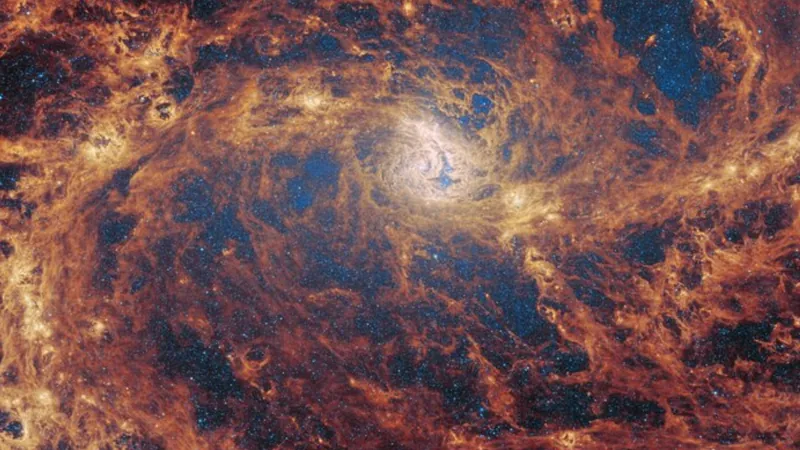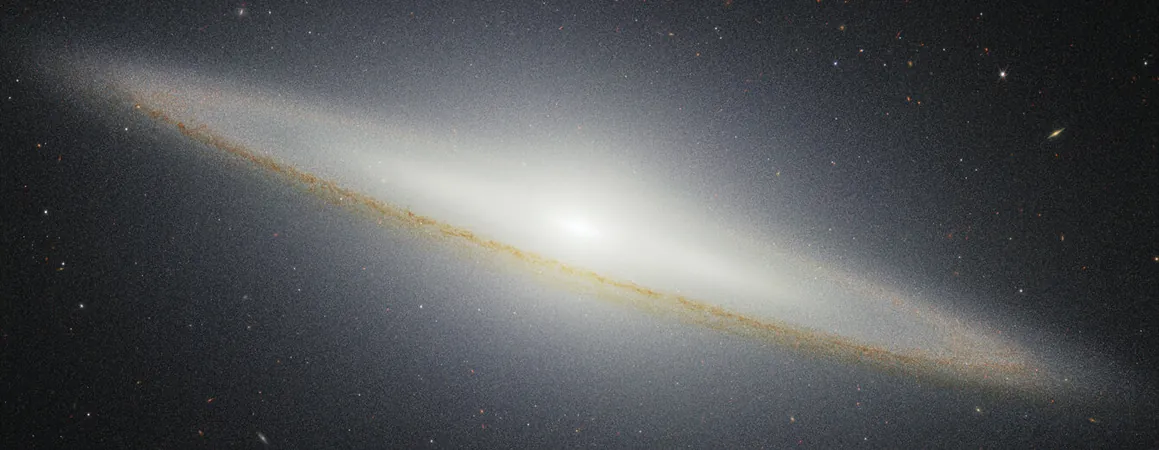
Did the James Webb Space Telescope Just Uncover a Missing Supermassive Black Hole?
2025-04-28
Author: John Tan
For years, the cosmic mystery of supermassive black holes lurking in the centers of large galaxies has haunted astronomers. The Southern Pinwheel Galaxy, also known as Messier 83 (M83), has perplexed scientists as it appeared devoid of this cosmic giant.
Enter the James Webb Space Telescope (JWST), a groundbreaking instrument that may have finally provided the evidence researchers have long sought. Recently, scientists announced they have found promising signs of a supermassive black hole nestled at the heart of M83, located a staggering 15 million light-years away.
Linda Smith from the Space Telescope Science Institute expressed excitement, stating, "The JWST is revolutionizing our understanding of galaxies. For years, astronomers have scoured M83 for a black hole without success. Now, we finally have a compelling clue that suggests one may indeed exist."
Supermassive black holes are massive entities, often weighing millions to billions of times more than our Sun. These cosmic behemoths usually become evident when actively consuming matter, surrounded by a fiery halo of gas and dust that illuminates their surroundings. This vitally active region is known as an "active galactic nucleus" (AGN).
Scientists have theorized that either M83's central black hole is in a dormant state or the AGN it potentially powers is cloaked by thick layers of dust. New findings from the JWST lean towards the latter, revealing clumps of highly ionized gases as crucial evidence of an obscured AGN within M83.
Team leader Svea Hernandez from the European Space Agency (ESA) shared, "Our discovery of highly ionized neon emission in the nucleus of M83 was unexpected. These signatures require enormous amounts of energy to produce—far beyond what typical stars can muster." This strongly hints at the presence of an AGN that had remained hidden until now.
Moreover, even explosive supernovas from massive stars cannot generate the energy signature identified by the JWST, making the AGN the leading suspect. However, scientists must rule out other possibilities, such as shockwaves traveling through the interstellar medium.
Next up? Astronomers plan to follow this intriguing lead with additional observations from the Hubble Space Telescope, the Atacama Large Millimeter/submillimeter Array (ALMA), and the Very Large Telescope (VLT).
This research not only showcases the JWST’s unparalleled capability to detect previously hidden cosmic structures but also flips earlier assumptions on their heads. As Smith concludes, "Our findings challenge past beliefs about M83 and open exciting new pathways for exploration within the universe."
The groundbreaking research was published in The Astrophysical Journal on April 17, revitalizing hopes for enhanced understanding of the cosmos.


 Brasil (PT)
Brasil (PT)
 Canada (EN)
Canada (EN)
 Chile (ES)
Chile (ES)
 Česko (CS)
Česko (CS)
 대한민국 (KO)
대한민국 (KO)
 España (ES)
España (ES)
 France (FR)
France (FR)
 Hong Kong (EN)
Hong Kong (EN)
 Italia (IT)
Italia (IT)
 日本 (JA)
日本 (JA)
 Magyarország (HU)
Magyarország (HU)
 Norge (NO)
Norge (NO)
 Polska (PL)
Polska (PL)
 Schweiz (DE)
Schweiz (DE)
 Singapore (EN)
Singapore (EN)
 Sverige (SV)
Sverige (SV)
 Suomi (FI)
Suomi (FI)
 Türkiye (TR)
Türkiye (TR)
 الإمارات العربية المتحدة (AR)
الإمارات العربية المتحدة (AR)